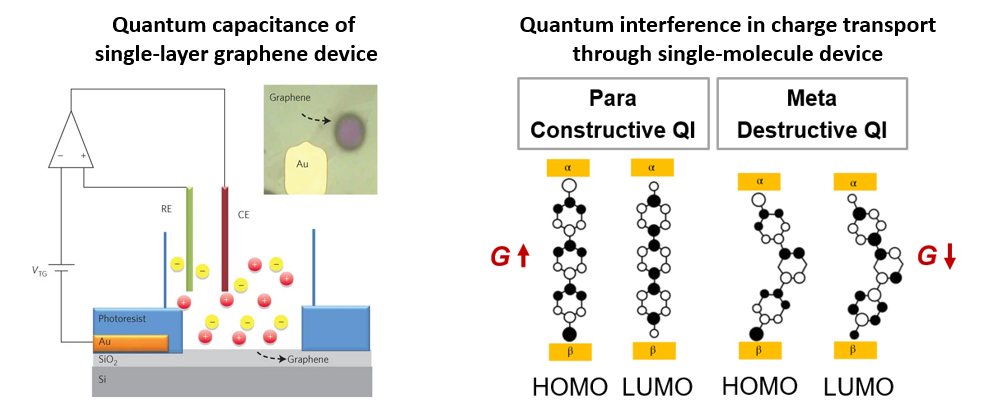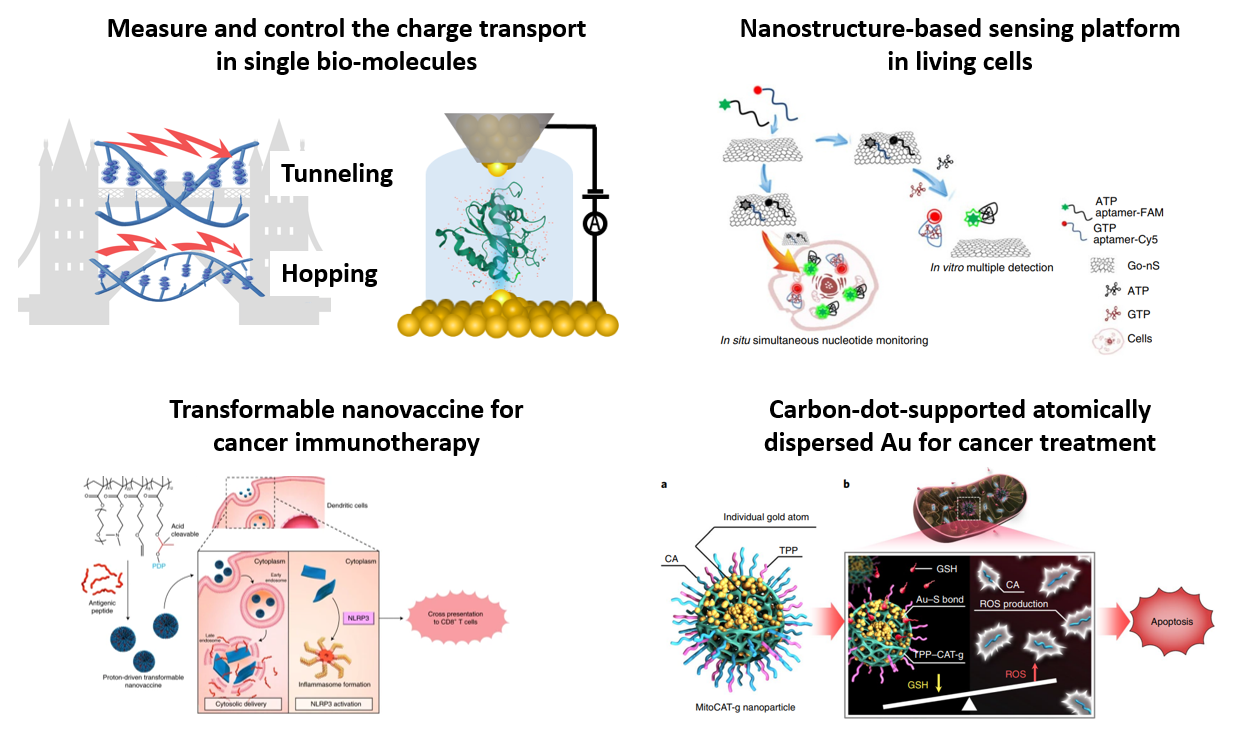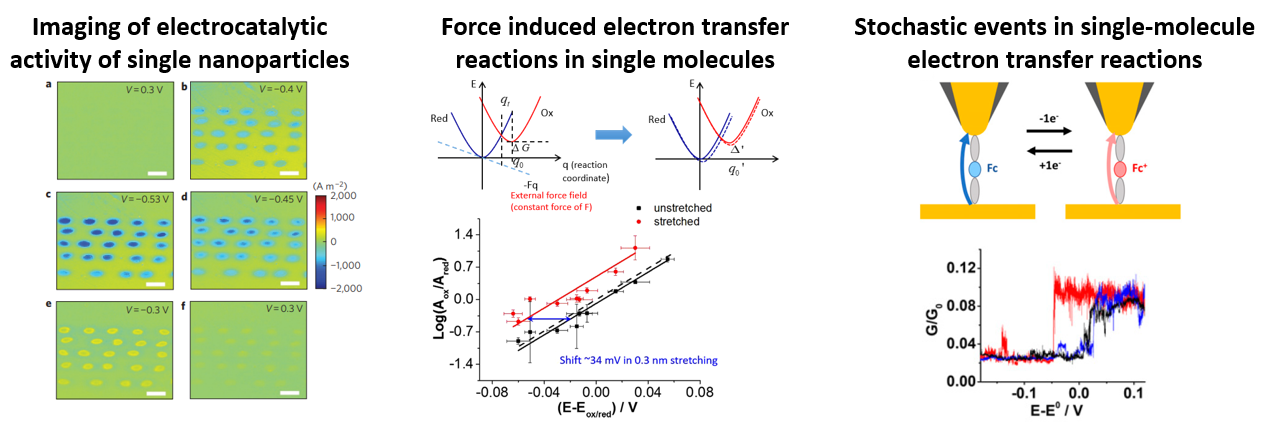Our group focuses on the research of single-molecule electronics, which studies charge transport in single molecules. This is an interdisciplinary research field that includes physics, chemistry, biology, material science and engineering. We perform single-molecule measurements based on scanning tunneling microscopy break junction (STMBJ) techniques, design new methods for deciphering the most delicate features in single-molecule events, study chemical reactions / biological processes at single-molecule scale, and develop novel single-molecule devices for next generation electronics.
1. Single-Molecule Electronic Devices
We study the novel electronic properties controlled by quantum mechanics at nanometer scale and single-molecule level, based on which we develop single-molecule devices with unique functions.

Nat. Nanotechnol., 4: 505, 2009; Nat. Mater., 18: 357, 2019;
Chem. Sci., 16:1353, 2025; JACS., 147:18475-18483, 2025
2. Bio-Electronics and Bio-Inspired Devices
We develop single-molecule techniques to characterize the charge transport (CT) properties in nucleic acids and proteins, in an effort to understand their biological functions and to achieve programmable tuning of the CT properties. We also aim to combine single-molecule measurements with the techniques of molecular biology and nano-enginnering to provide new understanding and solution for diseases.

Nat. Commun., 7: 11294, 2016; Nat. Protoc., 9: 1944, 2014;
Nat. Nanotechnol., 15: 1053, 2020; Nat. Nanotechnol., 14: 379, 2019.
3. Electrochemical Reactions at Single-Molecule Level
We investigate electron transfer reactions at nanometer scale and single-molecule level, study the connection between the microscopic and macroscopic data, and provide new insights into a wealth of chemical and biological processes.

Nat. Nanotechnol., 7: 668, 2012; JACS, 139: 14699–14706, 2017; PNAS, 116: 3407-3412, 2019;
PNAS 119, e2122183119, 2022; Chem.Soc.Rev., 2025 DOI:10.1039/D4CS01326C
4. Intermolecular Activities between Single Molecules
We design single-molecule strategies to detect, analysis and understand the delicate features in intermolecular activities such as host-guest interaction and pi-pi stacking.

Nat. Commun., 10: 4599, 2019; JACS, 145:1617-1630, 2023